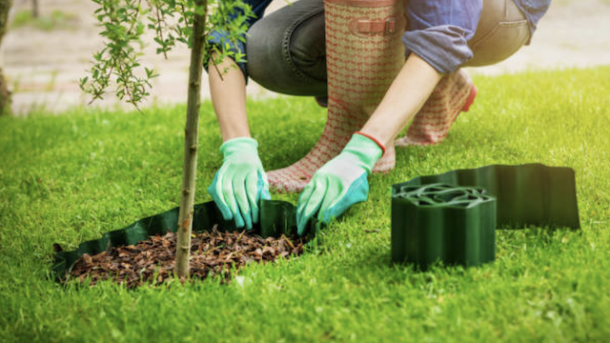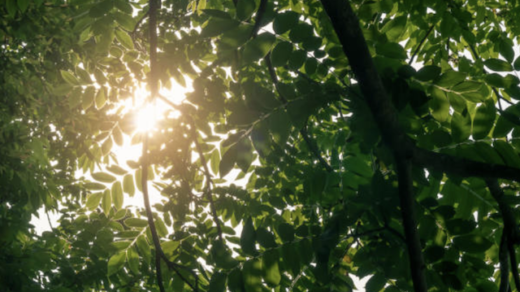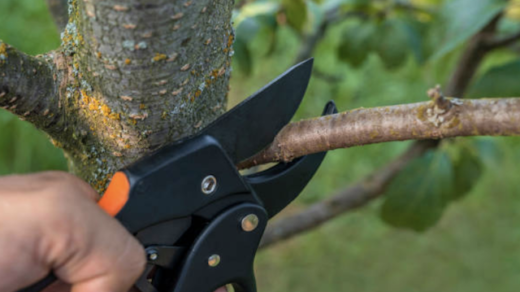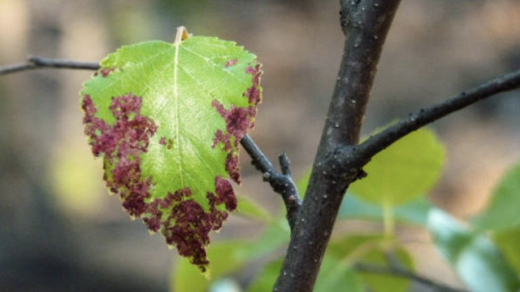Planting a tree on your property has several benefits. Trees offer much-needed summer shade, filter contaminated air and increase curb appeal and property value. Everyone should plant trees.
Once completely grown, trees are very simple to maintain: another benefit! Trees are hardy and tend to continue growing despite minimal care. But, if you want to help your trees achieve their full potential, they need a little more effort.
Lack of care for young trees can lead to rotting, disease, under watering or pest problems.
The good news is that caring for trees isn’t all that difficult, but you do need some tips to do it right. Educate yourself with the trees you plant in order to know exactly what they need. Then care for them and watch them bloom.
Here, we’ll list the five best practices on how to plant a new tree and seeing it grow. You probably are familiar with the basics, so we’ll dive a little deeper and lay out how to complete each step correctly.
Tree Care Tips for New Trees
These five tips will not only help keep your trees alive, they’ll help them to grow much faster, stand up to strong winds, fight off diseases and pests and produce more leaves, buds or fruit.
Water Your Tree
New trees need more water than grown ones. The trees you plant on your property are no exception.
The root ball of the tree and the soil surrounding it need be kept moist, but don’t let it get soaked, as this might cause some of the roots to rot.
The popular recommendation is 4-10 gallons of water every week. This includes rain water, and although it’s difficult to have an exact reading, a rain gauge can help get you close enough to add the remaining gallons. Your new trees will need this much water for the first 2-3 growing seasons.
Mulch Around Your Trees
Mulch is much more than an attractive landscaping material. It also helps protect new trees, especially the roots underground. But laying mulch the wrong way can sometimes lead to rotting and decay – so much so, that it’s possible that the tree will not survive.
Place mulch 3 inches away from the tree trunk and spread it around to completely cover the ground underneath the longest horizontal limb. For new trees, this isn’t going to be very far, but as the tree grows, your mulch area will continue to grow as well.
Keep the mulch 2 to 4 inches thick in all areas around the tree. Be vigilant in keeping it spread out consistently and far enough away from the trunk of the tree so it does not stop air flow around the tree trunk.
Fertilize Around Your Tree
Fertilizer provides several nutrients your soil may not have naturally. Most new trees benefit from fertilizing, but you need to be using the correct products and doing it at the correct time for fertilizer to be most beneficial.
The ideal time to fertilize is early spring. Sometimes early summer provides good conditions (mild temperatures and wet soil), but don’t count on it.
If you aren’t certain about which fertilizer to use, speak to a tree care professional for advice. Slow-release fertilizers are usually a good idea because they feed your trees over a period of time rather than all at once.
Follow through with these things in the first growing seasons after planting a tree, and then reevaluate your watering, mulching and fertilizing needs as the tree grows larger. As time goes on, there will be additional tree care tasks that become more important for your young trees.
Trim Your Tree
Tree pruning is very important – but very tricky – in the early years after planting a new tree. As the tree grows bigger, you will see several little branches take off, attempting to become the tree’s trunk. While you may think this shows that the tree is healthy and that it is growing well, it can actually result in a very weak tree as time goes on.
Early trimming helps to shape the tree into what it is going to ultimately look like when it is much larger. As little branches emerge on the lower trunk, they need to be removed so they don’t steal water and nutrients from the upper branches.
As long as you have trees somewhere on your property, they need to be trimmed periodically. When the trees get too big for you to prune them safely, you can trust RI Tree Trimming to do the job for you.
Monitor Your Tree
Young trees are at the most risk for damage, disease and pest problems. But you’re never completely safe from these things. As your tree grows older, watch it carefully for signs of disease or bad nutrition, including the following:
- Leaf color change out of season, especially leaves turning brown or yellow
- Early leaf falling, regardless of whether these leaves look healthy or diseased
- Withering, even with proper watering
- Individual branches or limbs dying
- Peeling bark
These signs likely mean a health problem. It is likely going to require professional maintenance if your goal is to keep the tree alive. A certified arborist can usually identify the issue by simply looking at your tree, although they will perform testing whenever necessary.
If you catch the problem early enough, you will likely be able to save the tree from dying. Being proactive is the best course of action to protect new trees.
The tips above are basic but effective. Don’t underestimate the value of the basics! When your new trees have proper care, combined with sunshine and barring any severe, damaging weather, the odds are probable that they will survive and will look beautiful!
Of course, you could already have a lot on your plate and don’t really want to perform these additional lawn care projects. In many cases, homeowners don’t have the physical ability or the tools to give their new trees the necessary care.
No matter the situation, it’s ok to seek the help of a professional for the care of new trees. A professional arborist in Rhode Island can consult with you about the course of care for each tree species you plant on your land. They love sharing their knowledge and skills with homeowners planting new trees on their land, and they can make the difference between trees that struggle and trees that thrive.
Call RI Tree Trimming now for information on routine tree maintenance in Rhode Island – including tree trimming – for new trees and old trees. An arborists can determine the best plan for your trees! Locate your city in our service area here.









